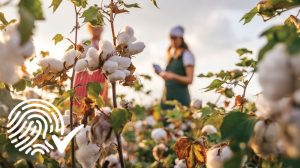While the Uyghur Forced Labor Prevention Act (UFLPA) is only 18 months old, it’s already causing a seismic shift in the textile industry — one that’s only set to increase.
Closer scrutiny of supply chains and stiff penalties for noncompliance have forced textile businesses to ensure their products aren’t sourced from regions known to employ forced labor practices. Failure to do so is directly affecting business’ bottom line.
As of November 2023, US Customs and Border Protection (CBP) has detained nearly 1,100 apparel, textile and foot-wear shipments, worth $13 million in products. More than 40 percent of these have not been released — making noncompliance a costly mistake.
“The fashion industry has woken up,” believes Ana Hinojosa, strategic regulatory advisor at Oritain. “Initially the industry was waiting to see if the government was serious about enforcement related to forced labor, but they now know that their products are under the microscope and so are focused on ensuring they comply. Although many companies have strong ethical practices governing their behavior, most are looking to protect their bottom line by ensuring shipments don’t get detained. In the fashion industry, products are very seasonal, so losing 30 days or 60 days of a fashion line to detention means effectively losing the season.”
Oritain’s market insights data, which identifies the prevalence of risk origin cotton in the global apparel market, reveals a trend towards sourcing diversification, especially at the manufacturing country level. It indicates that textile and fashion brands are reassessing whether their current sourcing strategy is exposing them to higher levels of risk.
Proving compliance is no longer a ‘one and done’ exercise. Greater transparency and proper due diligence into supply chain management has become essential. Instead of occasional written reports, textile businesses must now prove compliance through a series of quantifiable, verifiable actions.
Scientific traceability of product origin offers part of the solution. By pinpointing exactly where products originate from, it offers an objective forensic validation that the claims made by suppliers are accurate and that the trust importers have in their partners is well placed.
The UFLPA is not just shaping the industry today — it’s also influencing the market tomorrow. Textile businesses that comply with the legislation will enjoy greater access to potential investment that supports future growth.
“There’s much greater interest on the part of investors in the ethical and social responsibilities of businesses,” says Ana Hinojosa.
“Investors are evaluating the risk of the businesses they’re investing in based on their ethical and social commitments and the demonstrated efforts in meeting those commitments.”
With the National Council of Textile Organizations (NCTO) calling on CBP to increase inspections and testing of Chinese imports, one thing is certain. The UFLPA will continue
to cast a long shadow over the textile industry in 2024 and beyond.
Visit oritain.com/cotton to learn more about the UFLPA and how Oritain’s scientific traceability can help your business stay compliant.
This sponsored content was provided by Oritain.
January/February 2024





